Nothing elevates your culinary creations like fresh herbs, and growing them indoors means you can enjoy a year-round supply regardless of the season. Indoor herb gardening is not only rewarding but also an excellent way to enhance your home’s greenery. Whether you’re a seasoned gardener or a complete beginner, these 10 easy-to-grow herbs will thrive indoors with minimal effort.
1. Basil

Basil is a versatile herb loved for its vibrant flavor and aroma. It’s perfect for sauces, salads, and garnishes, making it a staple in many kitchens. While basil loves warm, sunny environments, it’s also surprisingly easy to grow indoors.
Genovese basil is a popular variety for its robust flavor, but you can also experiment with Thai basil or lemon basil for unique culinary uses.
Care tips:
- Place basil in a location that receives 6-8 hours of sunlight daily, such as a south-facing windowsill.
- If natural light is limited, use a full-spectrum grow light.
- Water when the top inch of soil feels dry, but avoid overwatering as it can cause root rot.
- Pinch off flowers as they appear to encourage leaf production.
2. Mint

Mint is one of the easiest herbs to grow indoors and a favorite for its refreshing taste and aroma. It’s commonly used in teas, desserts, and savory dishes. Mint’s rapid growth makes it an excellent choice for beginners.
Peppermint and spearmint are the most common varieties, but chocolate mint and pineapple mint can add exciting flavors to your kitchen garden.
Care tips:
- Mint thrives in indirect sunlight. Keep it in a spot that gets moderate light throughout the day.
- Water consistently to keep the soil moist but not soggy.
- To prevent it from spreading uncontrollably, grow mint in its own pot.
3. Parsley
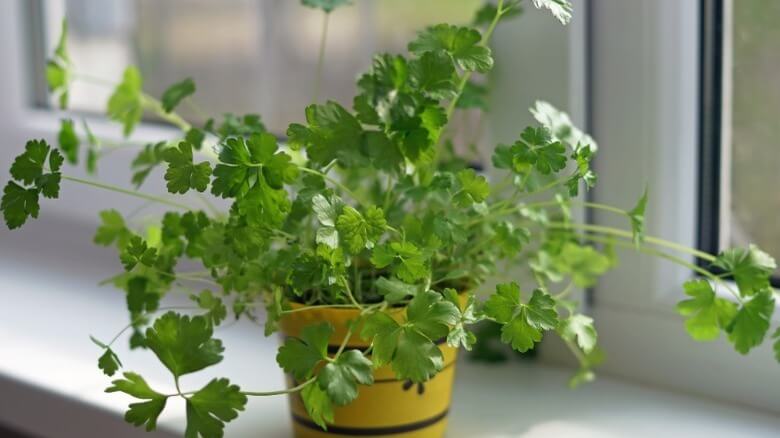
Parsley is a nutrient-packed herb used as both a garnish and a main ingredient in soups, salads, and sauces. It’s easy to grow indoors and can be harvested continuously.
Parsley is slow to germinate from seeds, so starting with established plants or seedlings can save time.
Care tips:
- Choose curly-leaf or flat-leaf parsley based on your preference.
- Place it in a spot that receives 4-6 hours of sunlight or use a grow light for supplemental lighting.
- Keep the soil moist but not waterlogged. Parsley prefers a slightly damp environment.
4. Chives
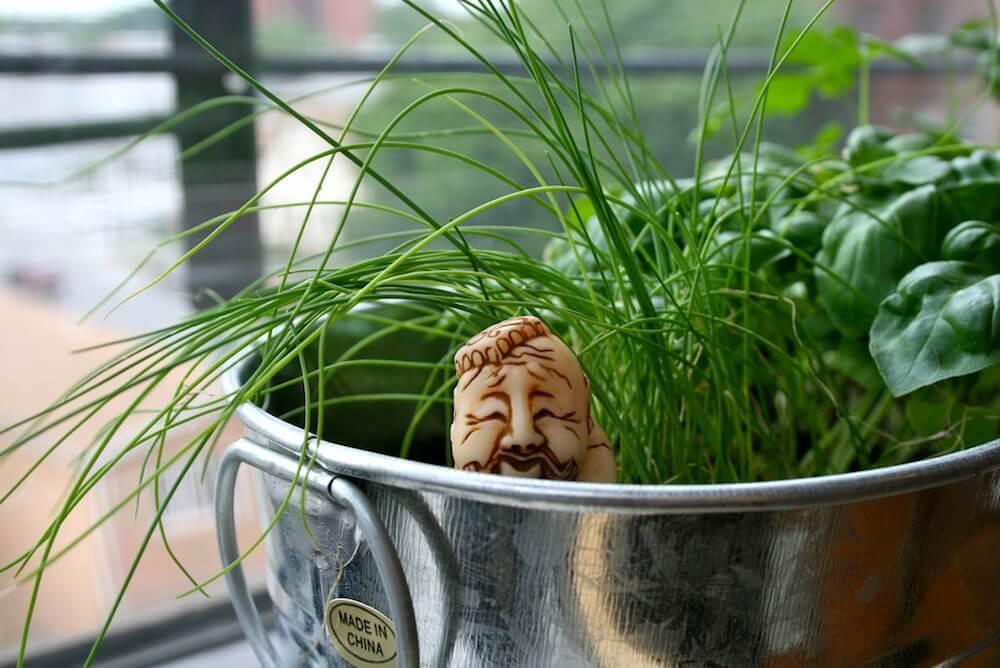
Chives are a hardy herb that adds a mild onion or garlic flavor to dishes. Their bright green, grass-like leaves make them a decorative and functional addition to your indoor garden.
Chives are perennials, meaning they’ll keep growing year after year with proper care.
Care tips:
- Position them in bright, indirect sunlight for at least 6 hours daily.
- Water regularly, but allow the soil to dry out slightly between waterings.
- Trim leaves regularly to encourage new growth and prevent flowering.
5. Rosemary
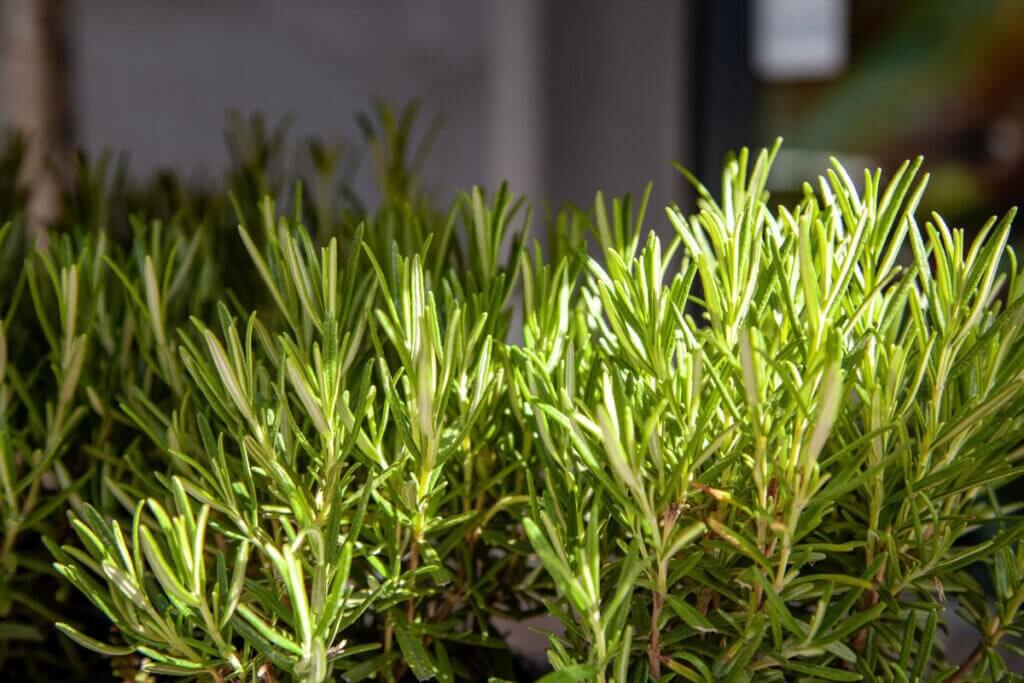
Rosemary is an aromatic herb that doubles as a decorative plant due to its evergreen, needle-like leaves. Its robust flavor pairs well with roasted meats, potatoes, and breads.
Rosemary is also an excellent air purifier, making it a practical and aesthetic addition to your home.
Care tips:
- Place rosemary in a location with bright sunlight for 6-8 hours daily. A south-facing window is ideal.
- Allow the soil to dry out between waterings to mimic its natural Mediterranean environment.
- Ensure good airflow around the plant to prevent mold and mildew.
6. Thyme
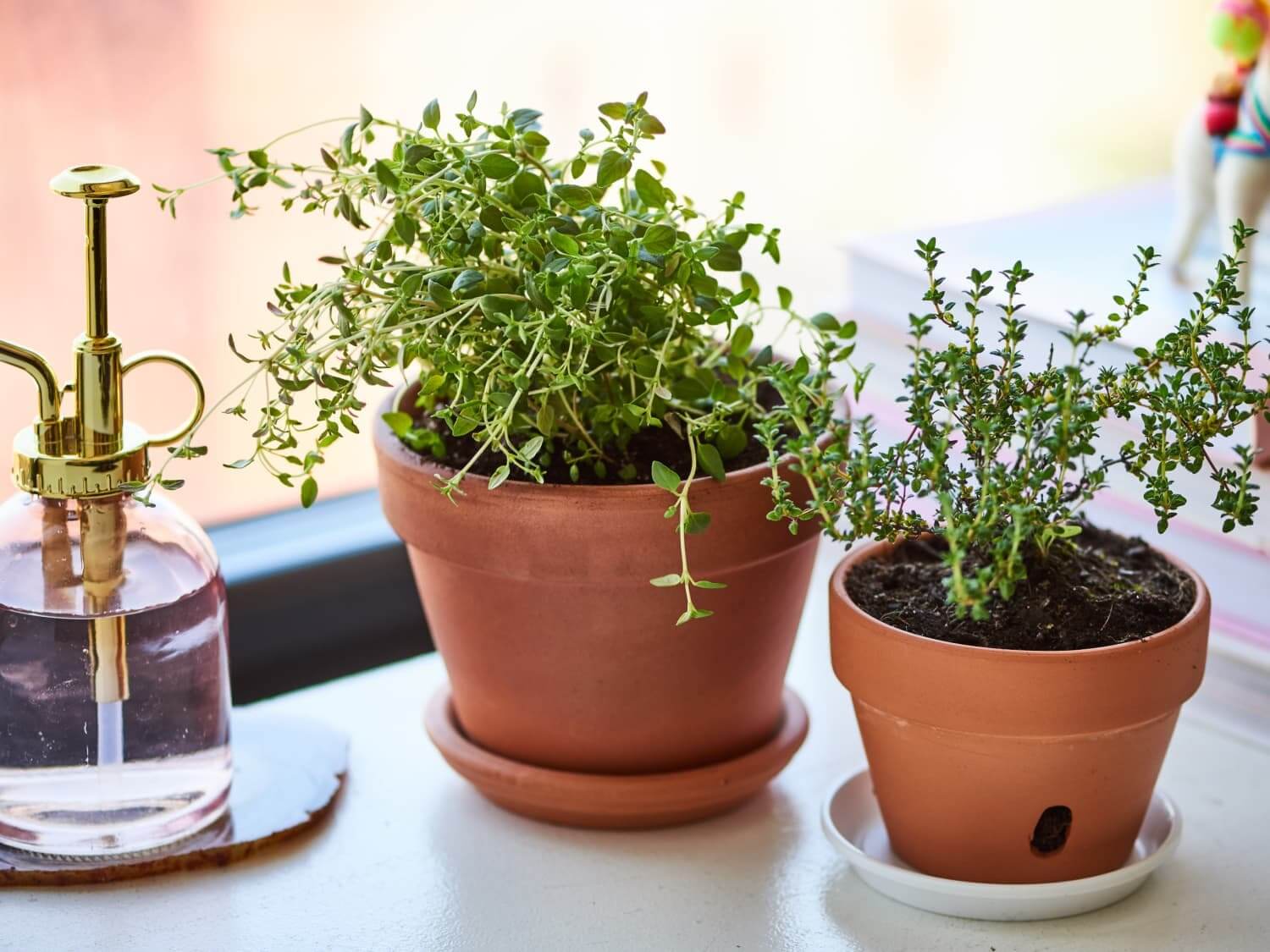
Thyme is a hardy herb with a savory, earthy flavor that’s ideal for soups, stews, and marinades. It’s low-maintenance and thrives in small pots, making it perfect for limited indoor spaces.
Lemon thyme and creeping thyme offer unique flavors and aromas.
Care tips:
- Provide 6-8 hours of sunlight daily or use grow lights to mimic natural conditions.
- Use well-draining soil to prevent waterlogged roots.
- Prune regularly to encourage compact growth and avoid legginess.
7. Oregano

Oregano is a must-have herb for Italian and Mediterranean dishes. Its robust flavor makes it a favorite for seasoning sauces, pizzas, and grilled meats.
Dried oregano has a more concentrated flavor than fresh leaves, making it versatile for year-round use.
Care tips:
- Ensure 6-8 hours of bright light daily. Place it near a sunny window or use a grow light.
- Water sparingly, allowing the soil to dry out slightly between waterings.
- Harvest frequently to encourage bushier growth.
8. Cilantro

Cilantro, also known as coriander, is a fast-growing herb with a bold, citrusy flavor. It’s commonly used in salsas, curries, and Asian dishes.
Cilantro doesn’t transplant well, so start seeds directly in the container where it will grow.
Care tips:
- Cilantro prefers cooler temperatures, so keep it in a spot away from heat sources.
- Provide moderate light, about 4-6 hours daily.
- Harvest leaves regularly to delay bolting (flowering).
9. Dill
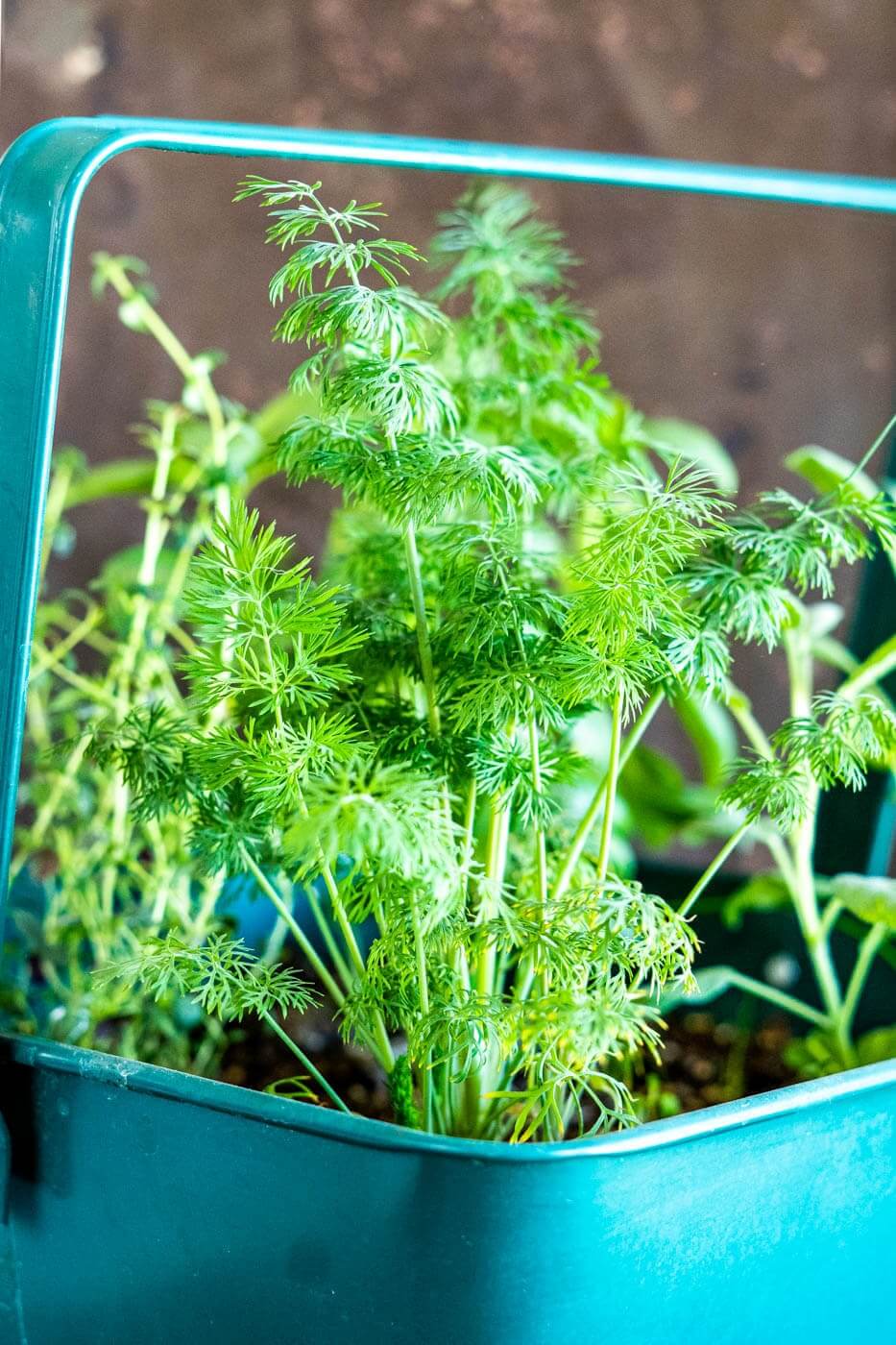
Dill’s feathery green leaves and tangy flavor make it a standout herb for pickling, seasoning, and garnishing. It’s a fast-growing herb that’s ideal for vertical gardening indoors.
The flowers can also attract beneficial insects if placed near an open window.
Care tips:
- Position it in a bright, sunny spot with 6 hours of light daily.
- Use a deep container to accommodate its taproot.
- Harvest leaves often to encourage new growth.
10. Sage

Sage is a hardy herb with velvety leaves and a slightly peppery flavor. It’s an essential ingredient for stuffing, roasted dishes, and herbal teas.
Sage is also known for its air-purifying properties, making it a beneficial addition to your indoor space.
Care tips:
- Place it in a warm spot with direct sunlight for 6-8 hours daily.
- Allow the soil to dry between waterings to prevent overwatering.
- Prune frequently to keep the plant compact and healthy.
Expert Tips for Maintaining a Thriving Indoor Herb Garden
Creating a lush and productive indoor herb garden requires thoughtful care and attention to the specific needs of your plants. By mastering the fundamentals of lighting, soil, watering, fertilizing, and humidity, you can cultivate a vibrant, long-lasting herb garden that provides fresh flavors year-round. Here’s a detailed guide to help you succeed:
- Lighting: The Key to Healthy Growth
Proper lighting is one of the most critical factors for growing healthy herbs indoors. Most herbs require 6-8 hours of bright light daily to thrive. If your home lacks sufficient natural sunlight, especially during shorter winter days, consider investing in a full-spectrum grow light. These lights mimic natural sunlight, ensuring your plants get the energy they need for robust growth. Position the grow light close to the plants but not too close to avoid overheating. For herbs on a windowsill, south-facing windows are typically ideal, as they offer the most consistent light exposure.
- Choosing the Right Soil for Optimal Health
Herbs grown indoors require high-quality, well-draining potting soil to prevent waterlogging and root rot, which can quickly damage or kill plants. A mix designed specifically for herbs or vegetables often works best, as these blends provide the right balance of nutrients and drainage. Avoid using garden soil, as it can compact easily in pots and may introduce pests or diseases. Adding a small amount of perlite or sand can further enhance drainage, ensuring that your herb roots remain healthy and oxygenated.
- Watering: Striking the Perfect Balance
Consistency is crucial when it comes to watering your indoor herbs. While most herbs prefer evenly moist soil, overwatering can lead to problems like yellowing leaves and root rot. To strike the right balance, check the top inch of soil with your finger—if it feels dry, it’s time to water. Use room-temperature water to avoid shocking the roots, and always ensure pots have drainage holes to allow excess water to escape. Over time, you’ll learn the specific watering needs of each herb, as some, like rosemary, prefer slightly drier conditions, while others, like basil, thrive in consistently moist soil.
- Fertilizing for Vigorous Growth
Feeding your herbs the right nutrients is essential for maintaining their growth and flavor. A balanced, water-soluble fertilizer is ideal, as it provides a steady supply of essential nutrients without overwhelming the plants. Apply fertilizer every 4-6 weeks during the active growing season, reducing frequency in winter when growth naturally slows. Organic options, such as compost tea or fish emulsion, can also be used to nourish your herbs while keeping them chemical-free. Remember to follow the recommended dosage, as over-fertilizing can lead to salt buildup and harm your plants.
- Managing Humidity for Indoor Success
Indoor environments, particularly during winter, can become dry due to heating systems. Many herbs, especially those native to Mediterranean or tropical regions, thrive in moderate to high humidity. To counteract dry air, mist your herbs lightly with water a few times a week, or place pots on a humidity tray. A humidity tray can be made by filling a shallow dish with pebbles and water, ensuring the pot sits above the waterline. Additionally, grouping plants together can create a microclimate that retains moisture in the air, benefiting all your herbs.
By prioritizing these five essential care practices, you’ll set your indoor herb garden up for long-term success. Not only will your herbs look lush and healthy, but they’ll also provide an abundant supply of fresh, flavorful leaves for your favorite dishes. With consistent attention to lighting, soil, watering, fertilizing, and humidity, your indoor garden will flourish, transforming your space into a green, aromatic haven.

